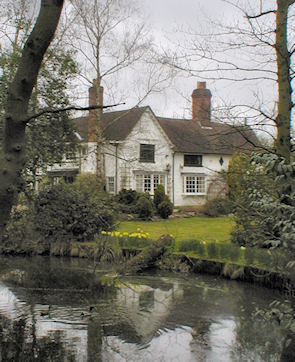Pinnerwood Park
Pinnerwood Park, Harrow
A pair of hillside housing estates built on former farmland north of Pinner Green

In 1547 Pinner Wood covered 127 acres but was cut back progressively to its present five acres. Pinnerwood House was built around 1600 and although much altered and reduced in size it survives today, with 17th-century panelling in its entrance hall.
Nearby Pinnerwood Cottage was built in 1867 and Pinnerwood Farm has a farmhouse dating from the later 19th century. The farm is set in 120 acres of land devoted to grazing and haymaking, and also breeds horses.
In the 1930s the Artizans’, Labourers’ and General Dwellings Company laid out the Pinnerwood Park estate with over 400 houses. The company had hitherto built for the skilled working classes, as its name suggests, but this was a middle-class garden suburb, aimed at those who could afford the train fare to the City.
Harrow council added an estate of its own in the 1960s.
Close to Pinner Hill golf course there are several pockets of more luxurious accommodation where back garden swimming pools are not uncommon.
Pinner Wood itself occupies the central part of the golf course and was formerly linked to Oxhey Wood, which lies to the north.
Pinner Wood School opened on Latimer Gardens in 1939. Rated ‘outstanding’ by Ofsted in 2011, the schools draws pupils from a relatively wide catchment area and has a high proportion of children from ethnic minorities, with almost half speaking English as an additional language.
Edward Bulwer-Lytton (later the first Baron Lytton) wrote his long-winded crime novel Eugene Aram at Pinnerwood House in 1832.
Postcode area: Pinner HA5
